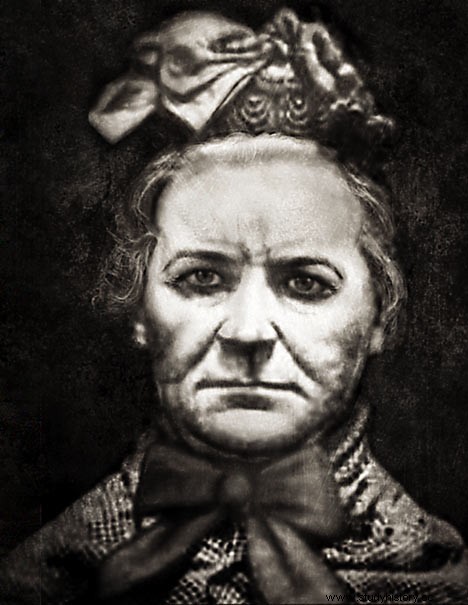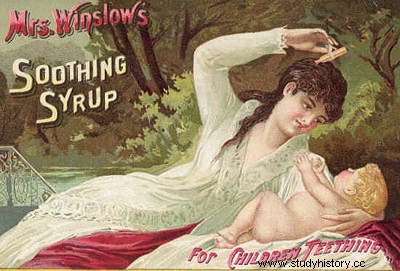We move to the Victorian era, more or less coinciding with the reign of Queen Victoria I of the United Kingdom (1837-1901), which was characterized by the enormous economic development resulting from the so-called Industrial Revolution and the expansion of the British colonial Empire. These significant social, economic and technological changes consolidated the United Kingdom as the first power of her time. Despite these changes, Victorian society was still governed by Puritan principles:discreet and orderly life, economic austerity, religious Methodism and political conservatism. The bedside book of the Puritans was Lady Gough's Book of Etiquette - a kind of manual for the perfect Puritan - reaching extremes as absurd as advising not to mix books written by men and women on the same shelf... they could only be together if the authors were married.
Logically, and in the midst of this puritanical and moralistic society, a child out of wedlock was a stigma that would mark mother and child throughout life. So, Baby farming was instituted and legalized in the United Kingdom and its colonies. . It was a kind of institution, governed by individuals, where children born out of wedlock, or those of single mothers and even those of prostitutes could place them and continue their lives –eyes that do not see, heart that does not feel -. Without any questions, women in these situations could give their foster babies to these businesses - because to their regents it was a business - for a regular fee (about five shillings a month) and be able to retrieve them in the future or make a one-off payment (about 10 pounds) so that the farmers -because they acted as authentic cattle breeders- gave them up for adoption. The adoptions were processed through advertisements in the newspapers and in a very fast process the mediators placed the children... and returned to collect from the adoptive parents. A full-fledged business. Some mothers - and I say mothers only because they gave birth to their children - opted for the quickest and most economical route... abandoning or killing their babies. In fact, the first person executed in the 20th century in England was Louise Josephine Masset for murdering her son.

Amelia Dyer
One of the regents of this type of establishment was Amelia Dyer . Amelia was a young English woman who, after the death of her parents, went to live with an aunt and began working as a nurse. Soon after, and although she was only 24 years old, she married 59-year-old George Thomas (both lied about her age on their marriage certificate). At the hospital she found out about the existence of this type of lucrative business and decided to set one up in her own home. Her comfortable position and the fact of being a nurse, helped her get babies with the first advertisements she placed in the newspaper. Although she preferred babies with a single payment and subsequent adoption with another payment, most of the babies that came to her were in foster care and periodic payments; that meant a house full of children to be fed and cared for. It was too much work... she stopped feeding them and to keep them calm she gave them Miss Winslows syrup -a kind of Apiretal or Dalsy of the time with the difference that it contained morphine sulfate, chloroform and heroin-. Logically, many children became ill and died. Thanks to the suspicions and the complaint of a doctor who certified the death of several children, she was arrested in 1879 and sentenced to six months in prison... not for homicide but for negligence.

After serving her sentence, she moved from Bristol to Caversham, started using aliases like Mrs. Harding or Mrs. Smith… and went back into business with her daughter Mary Ann (known as Polly ) and Arthur Palmer . She would now only accept one-time adoption payments, no periodic foster payments. After receiving the payment of 10 pounds and the baby, she got rid of it by strangling it with a white tape until it suffocated. And, of course, she, without a medical death certificate… she made packages and threw them into the River Thames. In 1896, one of those packages was found by a boatman with the remains of a child and he reported it to the police. Shortly after, another package appeared and with the evidence found among the bodies of the babies, they led the police to Mrs. Harding or Mrs. Smith… Amelia Dyer. When they entered the house, everything indicated that there had been a mass murder there:vaccination records, a roll of white tape, baby clothes, newspaper ad clippings... and, above all, a strong stench of rotting meat. coming from the kitchen pantry. Before the evidence, Amelia confessed…
You'll recognize mine by a white ribbon around their necks.
During her three weeks in the condemned cell, she filled five books with her "last, true and only confession “In which she admitted all her guilt, exonerating her daughter and her son-in-law. On June 10, 1896, aged 57, she was hanged at Newgate Prison. Although not all of her bodies were found, but based on the evidence found and the 30 years practicing this miserable profession, it is estimated that she could have murdered between 300 and 400 children. .
Unfortunately, she was not the only one convicted of this type of practice -infanticide-, in the United Kingdom six more farmers were hanged between 1870 and 1909. The case of the New Zealander Williamina Dean is also well known. (known as the Witch of Southland ), the only woman executed in New Zealand, also for infanticide as a farmer. Adoption laws were later tightened, giving local authorities the power to police baby farms in hopes of cracking down on the practices. Despite this, the trafficking and abuse of children did not stop. Two years after Dyer's execution, railway workers found an abandoned package in a boxcar in which they found a girl less than a month old still alive. She was the baby of a widow named Jane Hill who had given it to a Mrs Stewart for 12 pounds. It is said that the mysterious Mrs. Stewart was Polly, the daughter of Amelia. Nothing could be proven... .
